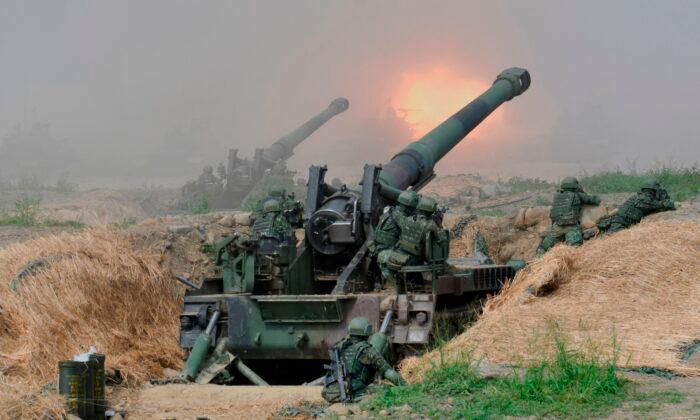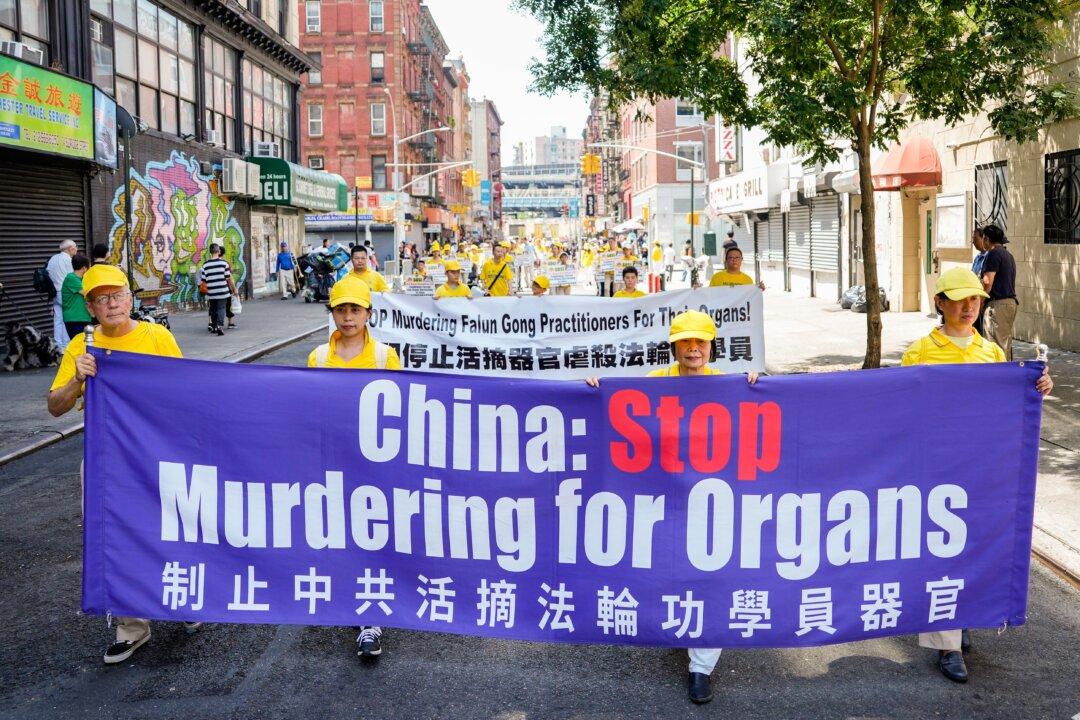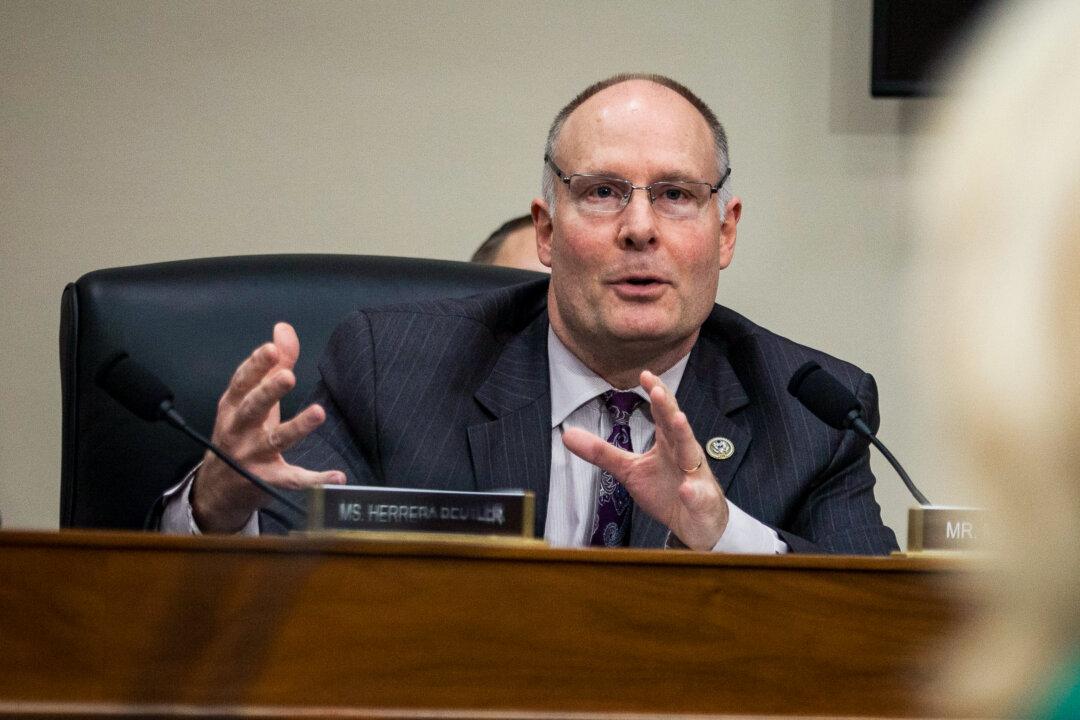TAIPEI, Taiwan—The Chinese communist regime is accelerating its plans to invade Taiwan, an expert warns, as Beijing ratchets up military maneuvers against the island.
Taiwan’s ADIZ, located adjacent to the island’s territorial airspace, is an area where incoming planes must identify themselves to the island’s air traffic controller.
The incursion was the most serious incident amid a significant increase in hostility by Beijing against Taiwan since 2020. Taiwan’s President Tsai Ing-wen, reelected last January, has taken a hard line against threats posed by the Chinese Communist Party (CCP), while the island has deepened its cooperation with the United States—prompting the regime to escalate its warmongering toward the island.
Last year, the Chinese air force flew about 380 sorties into Taiwan’s ADIZ, the highest number in a given year since 1996. So far this year, the Chinese military has been sending aircraft into the ADIZ on a near-daily basis.
The island’s coast guard on April 1 announced that Beijing has been flying unmanned drones near Taiwan’s Dongsha Island, located in the northern part of the South China Sea. The authority said it couldn’t rule out that Beijing was using the drones for reconnaissance purposes.
Preparing to Invade
Beijing’s incursions are part of a series of dry runs in preparation for an invasion of Taiwan, John Mills, former director of cybersecurity policy, strategy, and international affairs at the Office of the U.S. Secretary of Defense, told The Epoch Times.Mills projects that these exercises could culminate in a large-scale dry run in the next two years. These dry runs are necessary, Mills said, given the complexity of amphibious landing operations—as well as the fact that the Chinese military has never conducted a forced landing on a hostile power in a real-life situation before.
Any amphibious assault on Taiwan may also involve swarms of Chinese civilian merchant vessels and fishing boats, he said.
“If they haven’t done it in 10 years, I think [Chinese leader] Xi [Jinping] will probably have been removed from office. I think even six years is pushing it,” Mills said. He added that Xi could come under pressure to attack Taiwan to deflect attention away from internal problems, such as an economic crisis.
The Chinese military isn’t yet ready for an attack against the island, Mills said. The problem is, however, that the longer it waits, the more ready and fortified Taiwan will be.
“We all need to be aware of and be ready for an acceleration of these timelines,” he said.
Beijing’s Taiwan ambitions stem primarily from its desire to acquire the island’s semiconductor-making capability, according to Mills. Taiwan is home to TSMC, the world’s largest contract chipmaker.
Hitting Back at US
Soong Hseik-wen, a professor at the Institute of Strategic and International Affairs (ISIA) of Taiwan’s National Chung Cheng University (NCCU), told The Epoch Times that the Chinese regime was making a statement with its incursion on March 26, in response to actions by the U.S. government in March.“These three events showed that there are structural conflicts between China and the United States, and they cannot be resolved through diplomatic negotiations,” he said.
The meeting highlighted how far apart the Chinese regime and United States are on critical issues, as the Chinese delegation rejected U.S. concerns about Beijing’s human rights abuses in Xinjiang, its crackdown on freedoms in Hong Kong, and its intimidation of Taiwan, on the grounds that they are China’s “internal affairs.”
Viewing U.S. actions as escalating efforts to confront the regime, Beijing decided to flex its military muscle by sending a large aircraft squadron into Taiwan’s ADIZ on March 26, Soong said.
With the agreement, the U.S. government was “explicitly saying” that the coast guard would also be a part of its maritime strategy to secure peace and stability in the region, Soong said.
Soong suggested that Beijing could have received intelligence of the U.S. ambassador’s visit to Taiwan, which would have prompted Beijing to show its disapproval since the visit marked the first time a sitting U.S. diplomat has traveled to Taiwan since Washington ended diplomatic ties in favor of Beijing in 1979.
Defending Taiwan
In the face of an escalating military threat from China, Mills said the Biden administration should adopt an unambiguous policy of deterrence toward the CCP. Specifically, he said the United States should have a visible naval and air force presence around Taiwan, as well as in the East China Sea and the South China Sea.Boosting Taiwan’s self-defense capability is also important, and the Biden administration should sell the island any weapons it asks for, in accordance with the Taiwan Relations Act, according to Mills. Under the legislation, the United States is obliged to supply the island with weapons needed for its self-defense.
Taiwan’s missiles are “a clear message that they’re going to reach out and inflict cost,” according to Mills.
Soong suggested that the Biden administration could support Taiwan in two ways: assisting Taiwan to participate in international organizations and welcoming Taiwan to become a part of a “trusted industry alliance.”
Taiwan isn’t currently a member of the WHO because of Beijing’s objections.
Taiwan, located on the first island chain, would be among the first targets of any Chinese military aggression in Asia. The first island chain is an arbitrary demarcation from the southern Japanese island of Kyushu, Taiwan, the Philippines, to Indonesia. For decades, the CCP’s military strategists have seen the first island chain as a barrier to the regime’s air and naval power, leaving the second island chain and beyond out of its reach.
As a result, Soong said that some European and Asian countries, in particular Japan and Australia, are observing Taiwan closely to see whether cooperation between Taipei and Washington is solid.
“These countries are watching how the U.S. government will enact these legislation, questioning whether it will pay lip service [about U.S. commitment to allies’ security] under certain situations,” Soong said.
The Biden administration has said its commitment to Taiwan is “rock-solid.” But according to Soong, how serious the administration is in defending the island remains to be seen, especially given that Biden himself has never used the word “threat” to describe the CCP.
Soong said he foresees the United States and China engaging in small-scale military conflicts in the near future, especially around two Taiwan-controlled islands in the South China Sea—Dongsha and Taiping.
“I believe the United States and China are in a new cold war,” Soong said.






Friends Read Free